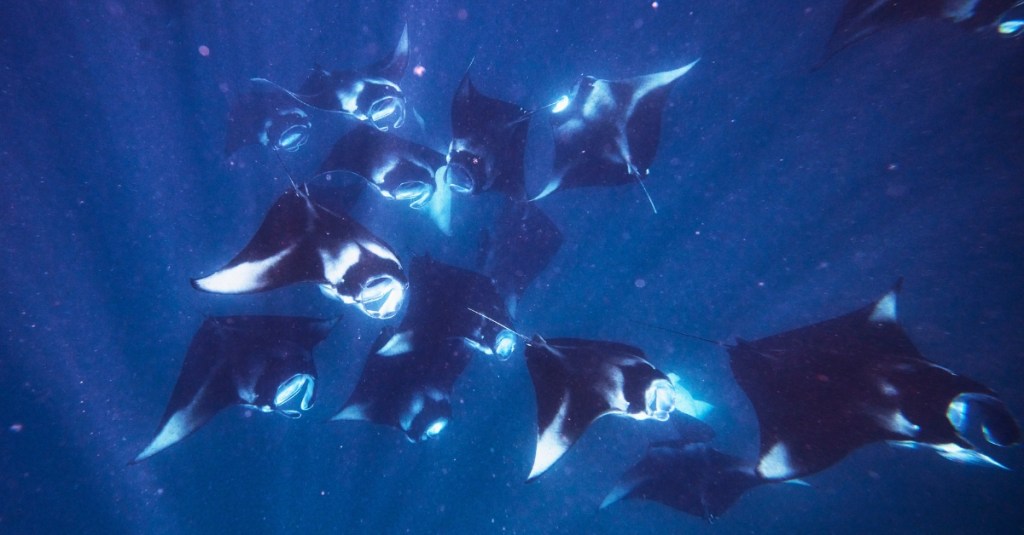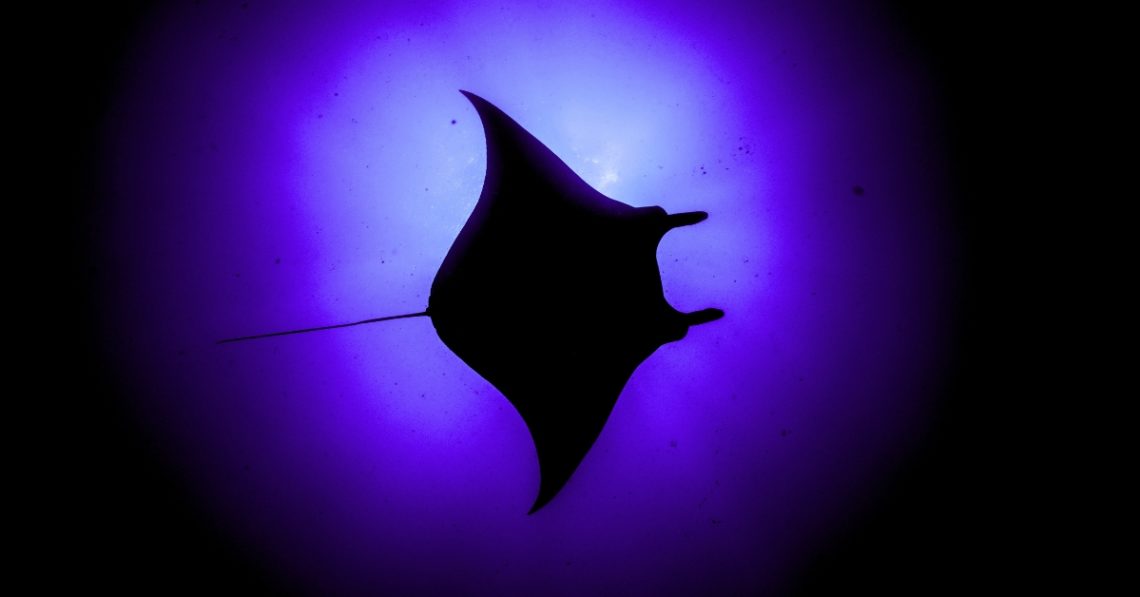Oceanic manta rays will occasionally dive around three-quarters of a mile below the surface of the ocean. After years of speculation, a team of researchers has just found out why.
It seems like manta rays have a kind of GPS in their heads. They calibrate it by plunging themselves deep into the inky depths of the sea.
Publishing their findings in Frontiers in Marine Science, a global team of researchers from New Zealand, Peru, and Indonesia tagged 24 of these Mobula birostris with high-tech gadgets and tracked them for 2,705 days. They found the rays diving not just deep, but also diving strategically with specific intent.

Manta Rays Dive Over 1,200 Meters Deep to Make Mental Maps of the Ocean
Most of these extreme plunges happened off the coast of New Zealand, right when the rays left the continental shelf and hit the open ocean. They were going straight down like a nosedive, descending in measured, stepped patterns. When they hit bottom, they turned around and traveled back the way they came.
And they were booking it. Some rays swam over 124 miles in just a few days, and all in an effort to develop a turn-by-turn route made of magnetic fields, light levels, and oxygen gradients.
According to Dr. Calvin Beale and his team, these ultra-deep dives are likely how mantas navigate the open ocean. Manta rays sample environmental cues in the desolate abyss, where conditions are less messy than near the surface, in an effort to build a mental map of where they’re going.
These manta rays are doing their best impression of an old-school cartographer taking notes by candlelight, or the more efficient but less romantic idea of a Google satellite snapping a fresh batch of satellite photos of your neighborhood.
All this is especially crucial around New Zealand, where underwater cliffs make it harder to figure out where you are, and by “you” I mean you, the Manta Ray reading this.
The post Manta Rays Have a Built-In GPS—and Dive to Extreme Depths to Use It appeared first on VICE.




